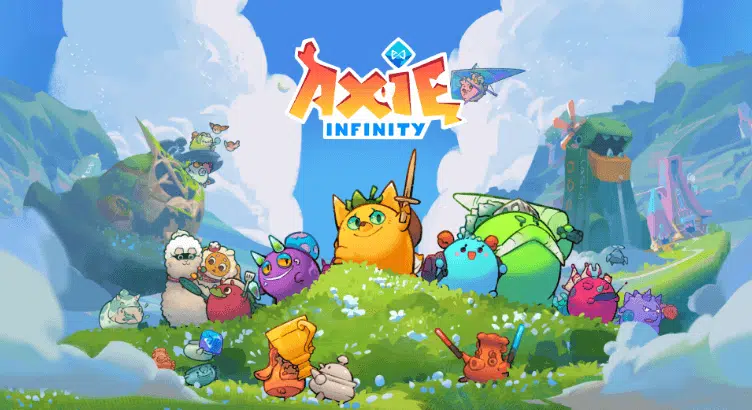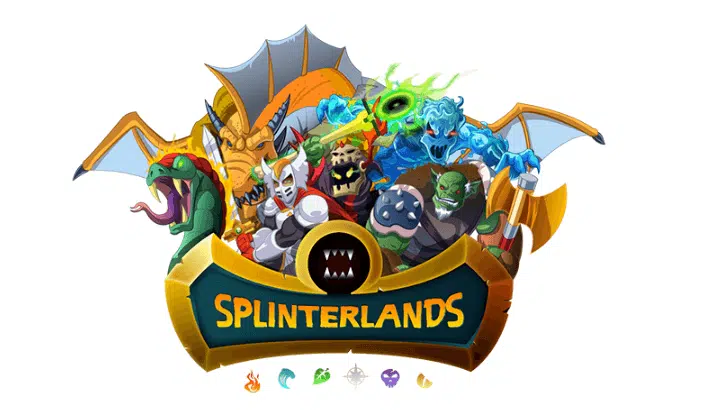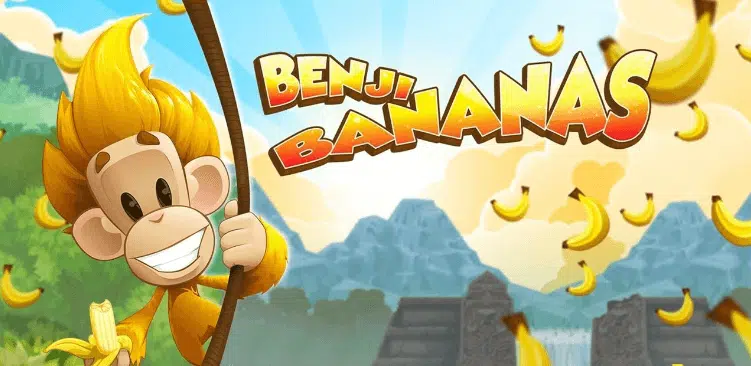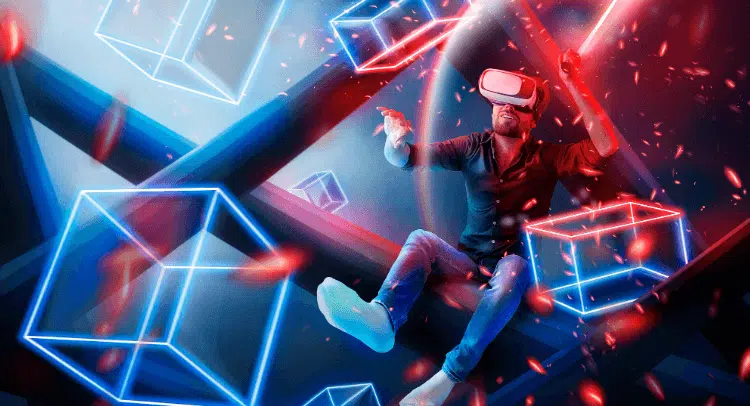TLDR
Blockchain-based games offer the same gaming experience as video games, but players must use blockchain to complete in-game transactions and interactions. These games offer NFTs as rewards that players can trade, sell, and hold to gain monetary value.
Players can choose from three types of games, such as play to earn, pay to earn, and metaverse. Each type offers different types of rewards and payouts. Before investing your gaming energies in one, it is crucial to know what each type of fun game entails.
So, read this guide and learn all the important details about the blockchain gaming market.
Introduction
Blockchain games are similar to standard video games, but their architecture is built upon blockchain technology, mandating players to complete all interactions and transactions through it. These games are available in all genres, including fantasy, puzzle, collectible, strategy, and role-playing games.
Blockchain games are popular because they allow players to monetize and exchange their assets for tangible currency. They also provide a safe gaming environment by using a decentralized gaming environment.
Keep scrolling to learn more about blockchain gaming in 2024.
The Beginning of Blockchain Gaming

Before moving on to blockchain gaming, let’s see how this concept was introduced in the first place. The first blockchain game, CryptoKitties, was launched in 2017 by Axiom Zen game developer. Players could own, breed, and exchange kittens in this game to earn assets. The newly bred kitten offspring combined initial character traits, generating a new NFT.
However, the game had multiple scalability issues based on the Ethereum blockchain technology that was struggling at the time. As almost 30% of transactions on the Ethereum blockchain were due to CryptoKitties, it could handle the influx that resulted in congested and delayed transactions.
The next blockchain game, The Sandbox, went live in 2018 and was launched by The Sandbox platform. It was a crafting game that allowed players to create in-game items with the help of a toolbox. Gamers could sell these items to gain cryptos and NFTs.
This game was quickly followed by Axie Infinity, also released in 2018 by Sky Mavis. It belonged to the play-to-earn games category, as the players received incentives and in-game upgrades after purchasing NFTs. Unfortunately, Axie Infinity was hacked in 2022, which caused the developing company to lose over $600 million. After this incident, the company removed the “play-to-earn” slogan from its website and marketing advertisements.
During the Covid-pandemic, there was no significant breakout in the blockchain gaming industry. However, the audience’s interest skyrocketed in GameFi and Metaverse games, giving way to crypto gaming scams and frauds.
How Does Blockchain Gaming Works?

Blockchain games require players to use crypto coins to access special features and characters for in-platform payments. Gamers can earn through XPs or in-game currency by playing and completing certain levels. Players can leverage these coins or XPs to buy in-game features and earn NFTs that can be exchanged for real money.
Such games are developed on a decentralized model, so the users are responsible for preserving their game data. Due to this model, they can also use gaming data across other blockchain games. For example, if you win XPs and special features like weapons and characters in one game, you can transfer your winnings to another game for selling and trading with other players. All NFTs are equally valuable, but the player receives different monetary values depending on the trading situation.
Blockchain gaming works through these components:
Universal Player Identities

Each gamer has a unique player identity in their closed crypto gaming ecosystem, which they can use in different games and blockchains. For example, you have to make a separate account for Steam crypto games, Riot Games, and other companies’ blockchain games.
However, players can use crypto wallets to obtain a universal entry pass to access all games with only one identity. Even though crypto gamers can use this to access multiple digital worlds, they still face connectivity problems. This is because there are scalability and connection issues between multiple blockchain ecosystems.
Smart Contracts
Smart contracts are the backbone of all blockchain applications, consisting of written code responsible for executing the agreement terms from outside the chain. It automates the actions that require a third party, so users don’t have to deal with an external party to complete various tasks. This increases trust and provides a secure environment for gamers to play.
Smart contracts offer a trust-minimized guarantee that ensures all tasks outlined in the contract will run as codified each time. Unfortunately, due to speed and scalability limitations, most blockchain games operate on hybrid architecture instead of complete smart contracts. Unlike blockchain technology, a hybrid architecture leverages both on-chain and off-chain code to maintain transaction and user data privacy.
In current blockchain games, smart contracts facilitate the production and movement of in-game items and currencies. They also secure crucial gaming functions, such as outcomes of a particular level or a match.
Digital Tokens and Currency

Digital tokens and currencies are similar to common video game staples. They are earned by defeating evil characters, completing quests, and moving on to the next level. Blockchain tokens come in two types: fungible and non-fungible crypto tokens. Fungible ones can be exchanged for real-life money, while the others are only used as in-game items.
The in-game tokens are stored and distributed by the developer’s backend server. Game developers cannot decide what players can do with their digital assets. The player is the only entity with digital asset ownership and completely controls their tokens. So, they can sell, trade, or use it to buy more in-game currencies; it is completely up to the gamer. However, this trend is changing in new games as game developers can make any digital asset worthless by removing its utility from the game code.
Trusted Partners
Types of blockchain games
Blockchain games are divided into various types, but all operate on blockchain to offer a safe and decentralized gaming experience. Those types are:
Play to Earn Games
Play to earn games reward players with cryptocurrency or other digital assets for completing levels and progressing further in the game. Unlike traditional games, these games depend solely on in-game purchases and advertisement for monetization.
By playing blockchain-based games, gamers earn value for their time and skills. They transfer these assets into the world whenever they unlock a new weapon, card, skin, or coin. After the transfer is complete, players can sell it for cryptos or real money.
Pay to Earn Games
Pay-to-earn games work on the investment model, as the player must make an upfront purchase to access gaming assets and features. The value of these assets increases over time, becoming profitable for the player to buy in-game assets in the long run. Players can complete new levels to upgrade the monetary value of these NFT tokens.
Making an investment or purchase is necessary; otherwise, players cannot just play games and earn money. The major difference between play-to-earn and pay-to-earn games is that the former doesn’t require payment for playing.
Metaverse Games

Metaverse games, integrating tech, art, and graphics, engage players in augmented or virtual reality. Representing a more advanced version of crypto games, they leverage a decentralized ecosystem and reward players with crypto coins, NFTs, and metaverse coins.
In metaverse games, every user receives a 3D avatar that replaces the player’s traditional profile. Players can either play with other gamers or use a solo mode to compete against an AI player.
Top Blockchain Games For Rewards
Several blockchain games are famous in the crypto gaming industry, such as:
1. Axie Infinity

Axie Infinity is an online game played by 24,635 people daily and contains virtual pets known as Axies. Nintendo’s Pokemon series inspired it, and Axies are similar to this cartoon series’s characters. The game is developed on the Ethereum blockchain technology and has a design that allows virtual assets to own their winnings.
Players can collect, battle, breed, raise, and build an entire kingdom of Axies to earn in-game assets. These Axies come in various species with distinct traits, abilities, and appearances. Players can also breed two different species of Axies to get a new one with unique abilities.
Players must connect their digital wallets with the Axie Infinity account to play this game. Once the accounts are synced successfully, players can buy their first Axies, as it is mandatory to own 3 Axies to begin playing. After gaining rewards through playing, gamers can exchange or sell their virtual assets on Ethereum and other blockchains.
Axie Infinity even has an online community where new players can learn breeding and battling techniques from advanced players. They can use these techniques to improve their gaming skills and earn more rewards.
2. Decentraland

The Decentraland game is a replica of the real world but in a three-dimensional format. It is developed on the Ethereum blockchain technology, has 8,000 daily active users, and must be played in the metaverse.
This real estate-based game empowers players to purchase land and construct various buildings, such as offices, theatres, museums, banks, etc. Users can also create 3D scenes and environments with a simple or complex interactive layout, depending on the player’s skill level.
The game offers two types of digital tokens, LAND and MANA. LAND is an NFT used for buying land and creating buildings on it. Meanwhile, the MANA token gives buying power to the player to purchase necessary game assets from the game’s marketplace.
3. Alien Worlds

Alien Worlds, built on the WAX blockchain, is a game containing six virtual worlds and 500 land plots. Players can own these plots and show their ownership through NFT. They can transfer these NFTs and other game assets to Binance, Smart Chain, and other staking systems.
In addition to land plots, gamers can own certain tools, minions, avatars, and weapons. Players can use three ways to earn game assets in the Alien World, which are:
- Mine on land plots by using in-game tools
- Passive income by owning plots and land
- Staking through Binance Smart Chain
The game is completely free to play, and the players even receive a free shovel to start mining after they sign up. Since the game is free of cost, the payout is extremely low. If the players want to increase the payout, they can invest as many Trilium tokens as they want.
4. Splinterlands

Splinterlands is a collectible card game based on the Hive blockchain. This game is a cross between deck-building games and auto-battler games. Players must engage in a battle they have to win by making a strong combination of cards available in their deck.
If the player makes a deck stronger than their opponent’s, they can win and receive rewards. Each match lasts only a few minutes to ensure gamers are not bored or tired from getting stuck in a round.
Not only can players use these cards for battles, but they can also store them as valuable collections. This is because Splinterlands’ cards are NFTs and can be traded in the NFT game marketplaces.
5. Benji Bananas

Benji Bananas is a mobile play-and-earn game developed by Tribeflame but published by Fingersoft. It is a physics-based arcade game based on the Ethereum and Polygon blockchains.
The game’s main character is Benji, and the players have to lead it through jungle vines, collecting bananas on the way. Players can unlock multiple upgrades and game assets by collecting items and bananas, such as cosmetics, power-ups, and boosters.
The best thing about this game is that it is compatible with a casual mobile gaming format. So, players can easily play it anytime on their mobile phone without purchasing an Xbox or PlayStation.
Limitations of Blockchain Games
Blockchain games have limitations and challenges because they are built on volatile blockchain technology.
Entry Barriers
Unlike traditional games, blockchain-based games often degrade the player experience due to their construction on a decentralized platform. Therefore, players must set up third-party wallets and fund them to start playing.
Gamers must complete transactions on a separate platform, breaking their gameplay immersion and concentration. As a result, it lowers seamless user experience while increasing security risks. Security risks are heightened because third-party sites have different privacy and security policies.
Poor Scalability
Most game developers aim to create a blockchain game solely on smart contracts. However, most of them have to use a hybrid model due to the limited scalability of a full blockchain-based game. Like video games, blockchain games have computation and latency requirements, which are not supported by crypto technology. So, playing a game solely built on blockchain technology leads to game lag, frustrating fast-paced gamers.
Disconnected Ecosystem
Unlike video games, the blockchain ecosystem is intrinsically open, which creates a lack of robust cross-chain infrastructure. A blockchain is a universally shared backend for all games built on it. Sadly, two crypto games developed on different blockchains are disconnected.
Due to this reason, players have limited options to send messages or game assets across gaming apps built on different blockchains. If players want to exchange assets or messages, they must sign up and use different crypto wallets. This back-and-forth between different platforms makes it challenging for the players to have a focused gaming experience.
Limited Game Selection
As the blockchain gaming industry evolves, only a handful of companies offer glitch-free and challenging blockchain gaming options. Even after considering these games, most experienced gamers do not find options to challenge their skill level.
Instead of blockchain and crypto games, most players select traditional games. These games are designed to match their intellectual and motor skills.
Gaming Regulations
People can play blockchain games from anywhere in the permitted countries and regions. They can also cash out trade NFTs in multiple areas. Every region has different laws and rules regarding cryptos and NFTs, so players are uncertain about taxes or fees they must pay for in-game activities.
Therefore, the landscape of blockchain gaming needs more development in the law department. Doing this can remove the uncertainty regarding how the rules and regulations of online games evolve across different jurisdictions. Additionally, it can remove legal and compliance risks faced by blockchain game developers and help them launch that are regulated across all jurisdictions.
The Future of Blockchain Games

Blockchain gaming needs further development to enhance the overall gaming experience. To eliminate the limitations and improve gaming, developers are taking future initiatives in the following areas:
- Wallet Account Abstraction: This will eliminate the need for players to use third-party crypto wallet services, reducing entry barriers. Players will sometimes not have to pay extra transaction fees charged by third-party crypto exchanges (if the application chooses to cover them).
- Layer-2 Scalability: Developers are creating a layer-2 environment to remove computational barriers. By leveraging this ecosystem, the gaming industry can remove scalability issues, long-term congestion, and high network fees.
- Blockchain Oracles: Blockchain oracles like Chainlink will make crypto games more efficient, transparent, and seamless. Blockchain oracles are ledgers or entities that connect blockchains to external systems to enable smart contracts.
- Cross-Chain Interoperability: This framework will generate a communication platform between blockchains and layer-2 environments to ensure digital assets are transported seamlessly across platforms.
- White-Label Wallets: These cryptocurrency wallets are software programs that collect public and private keys. They are customized according to the requirements of a crypto exchange. By using these wallets, gaming developers can offer on-platform services to reduce entry barriers and introduce in-game economies based on cryptocurrencies.
- Verifiable Randomness: This program is a cryptographic function that stores inputs and computes them to produce proof of authenticity. Blockchain games will verify user identity using this program to reduce scams and rigging.
In addition to these future advancements, mobile video game industry developers are expected to invest in blockchain gaming to ensure these games are accepted on a larger level. They are working on launching new blockchain features for the mobile version to ensure players don’t perceive these games as scams. The sooner people know these games are authentic, the higher the chances of accepting blockchain games.
Wrapping Up
Blockchain games are based on the blockchain technology used for cryptocurrency and NFTs. These games allow players to earn rewards that players can sell or trade to obtain real money. It creates unique player identities, smart contracts, digital tokens, and currencies.
Players can choose from three types of blockchain games: pay-to-earn, play-to-earn, and metaverse gaming. However, blockchain games have limitations around scalability, third-party payment portals, gaming collection, and entry barriers. Gaming developers are making future advancements to remove these issues and even make blockchain games available for mobile gamers.
If you want to learn more about blockchain-based games, check out Coin Web. We’re here to be your ultimate resource for all things crypto. Whether you’re a seasoned blockchain gaming enthusiast or just getting started, we have the latest news, insights, and resources to keep you informed and engaged. Visit our website today to stay up-to-date with the ever-evolving world of blockchain gaming. You can also check out our top guides!
Recommended Reads:
- Is Dogecoin Dead, or Will the Doge Meme Coin Shock the World?
- What is Pi Crypto and How Does it Work?
- What is XPR Crypto?
A blockchain game is a type of video game that utilizes blockchain technology, which enables secure and transparent transactions using cryptocurrencies and non-fungible tokens (NFTs). Unlike traditional games, blockchain games allow players to earn, trade, and own in-game assets with real-world value.
Blockchain games operate on decentralized networks, where data and transactions are recorded on a public blockchain. This ensures transparency, immutability, and ownership verification of in-game assets. Blockchain games often incorporate features like play-to-earn mechanics, where players can earn cryptocurrency rewards for their in-game achievements.
Blockchain games provide a high level of security due to the decentralized nature of the underlying blockchain technology. Transactions and ownership of in-game assets are recorded on the blockchain, making them resistant to fraud and hacking. However, players should be cautious when using third-party wallets or interacting with external platforms to ensure their personal security.
Blockchain games offer several advantages, including earning real value from in-game assets, increased transparency, and player ownership. However, limitations include the currently limited selection of blockchain games compared to traditional games, scalability issues, and potential complexity in navigating different blockchain technologies and platforms. These limitations are expected to be addressed as technology advances, leading to a more expansive and user-friendly blockchain gaming ecosystem.













